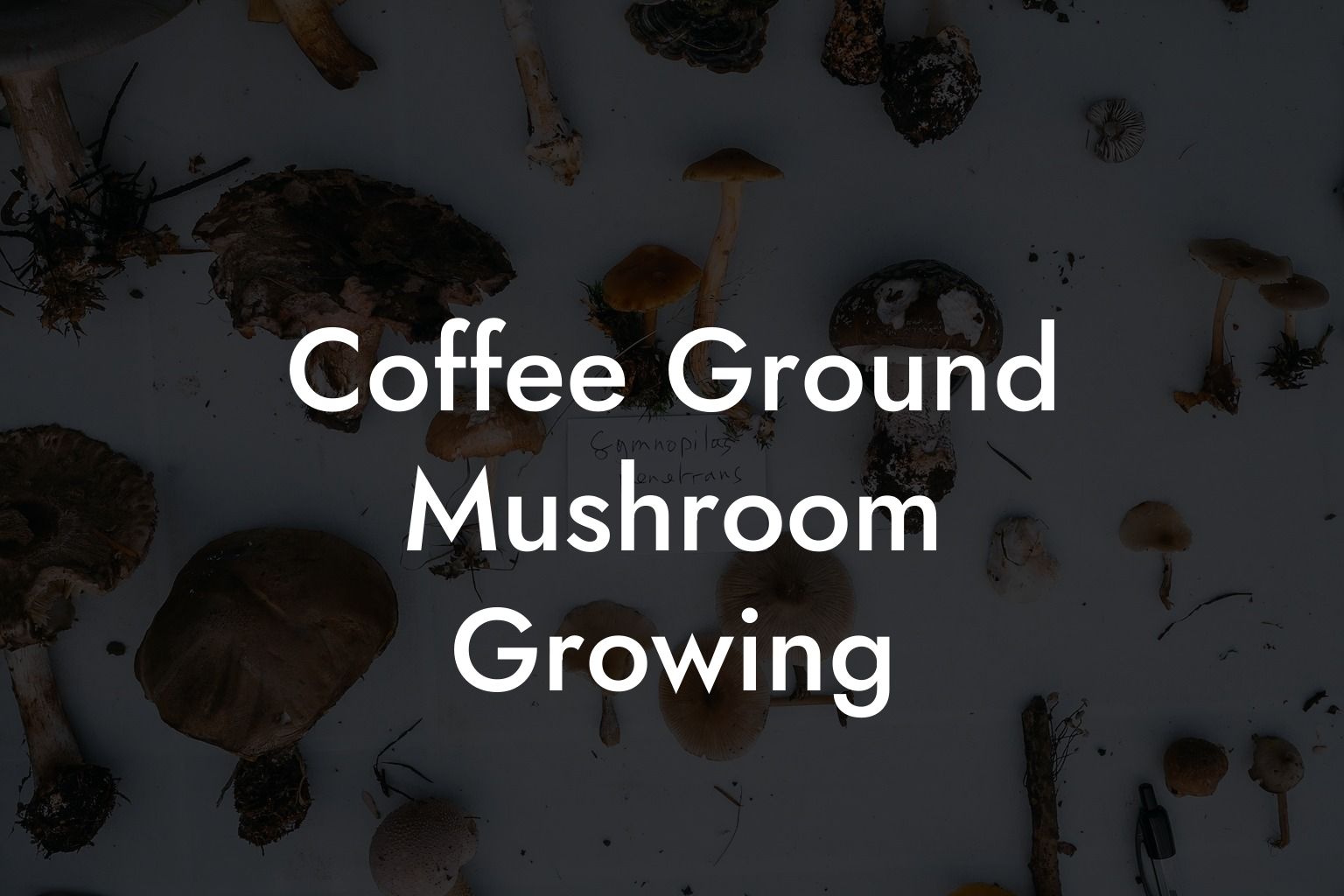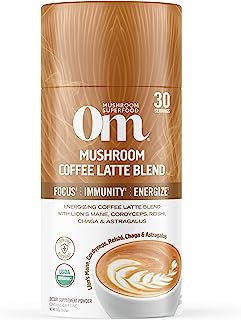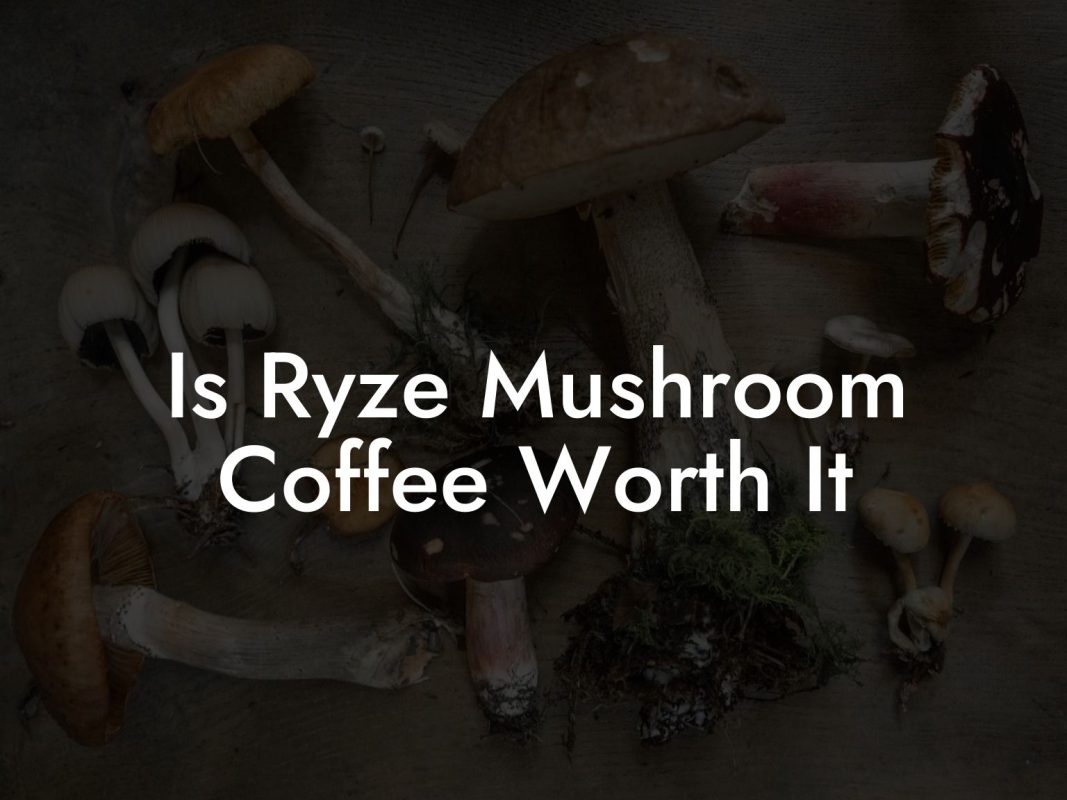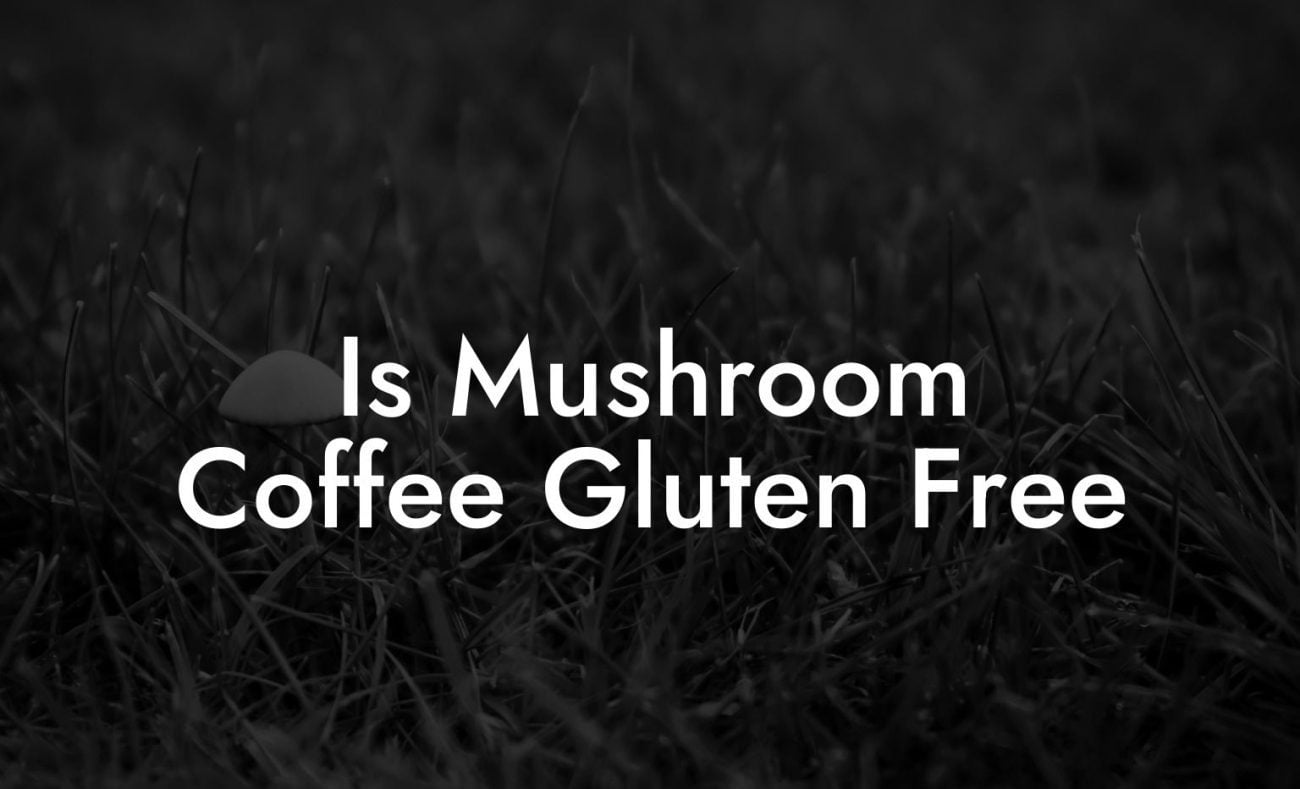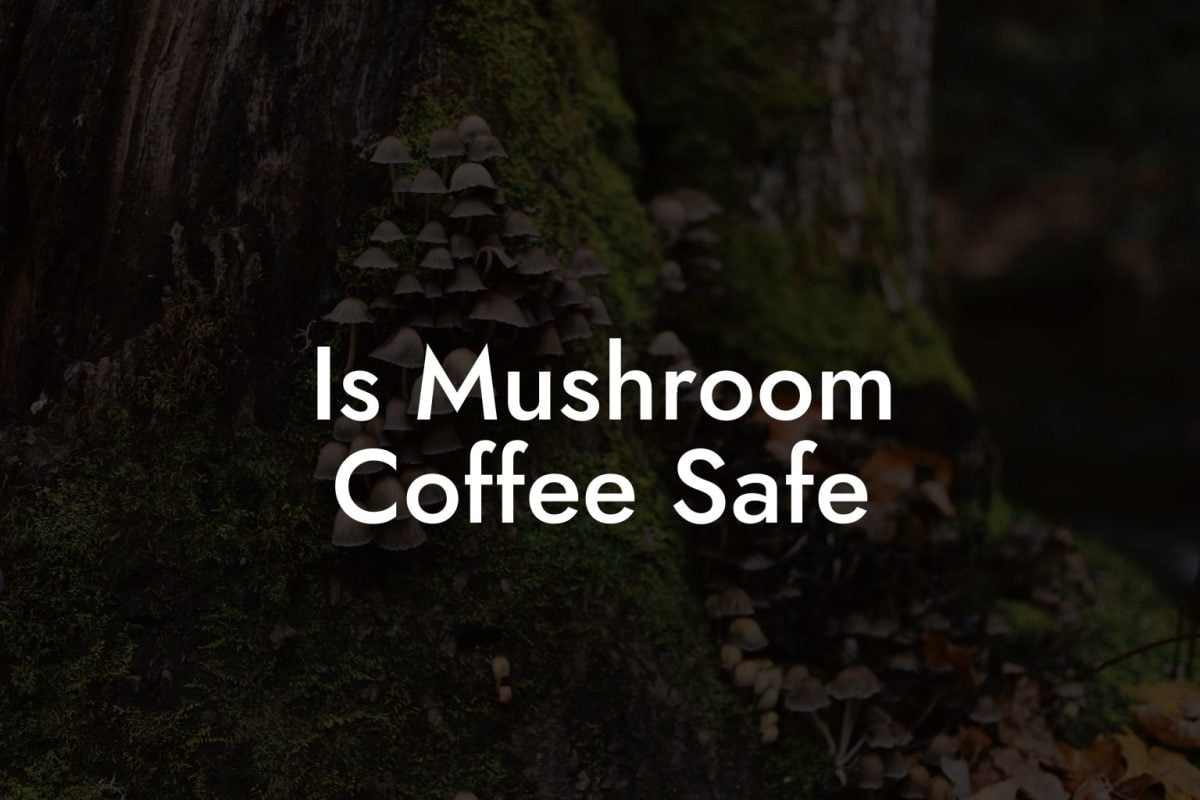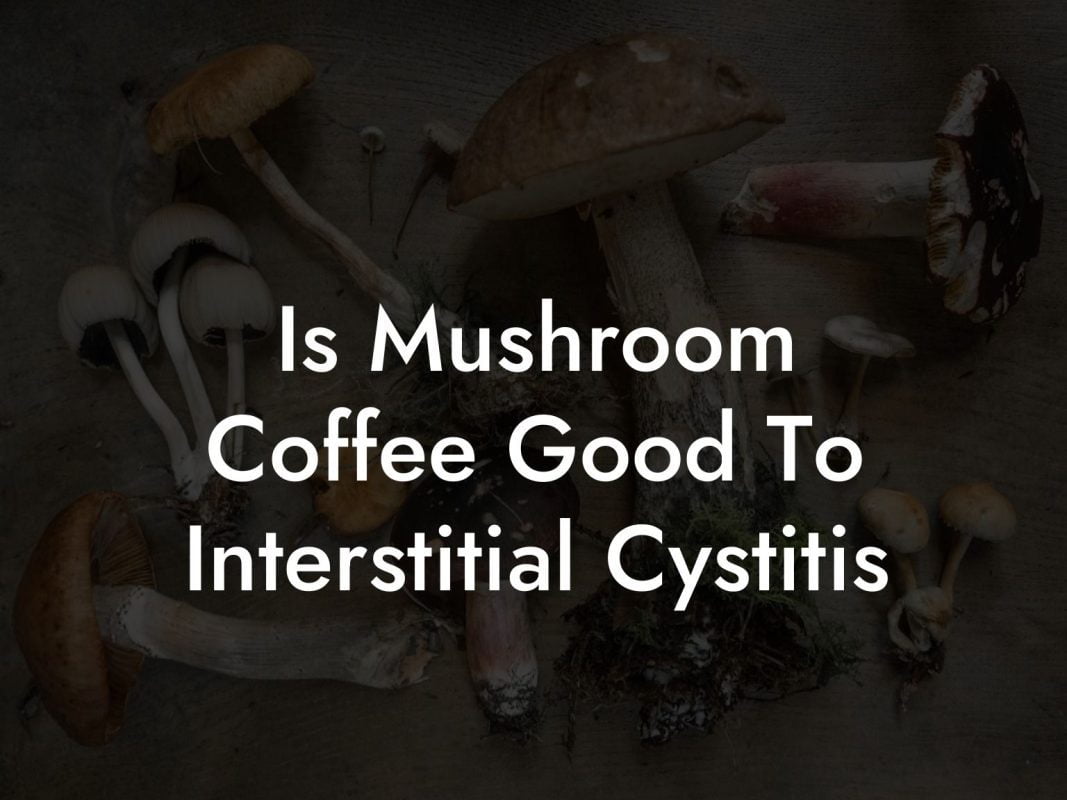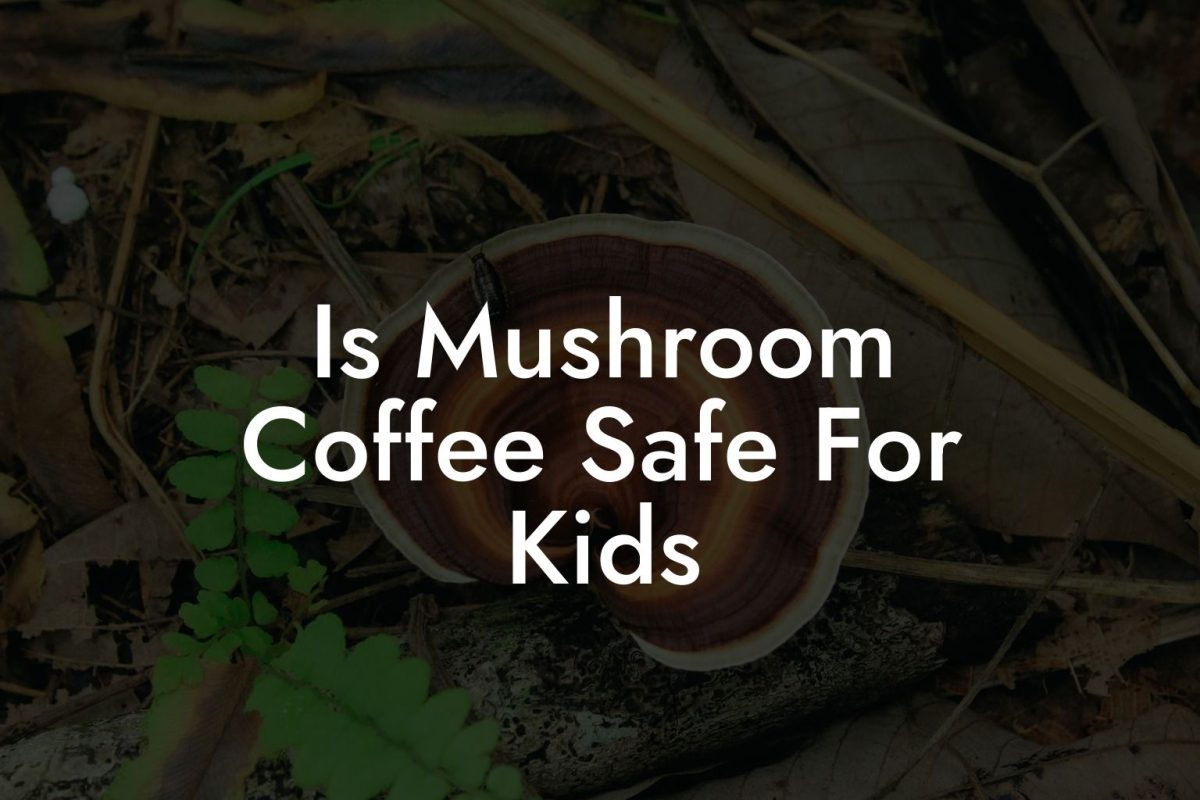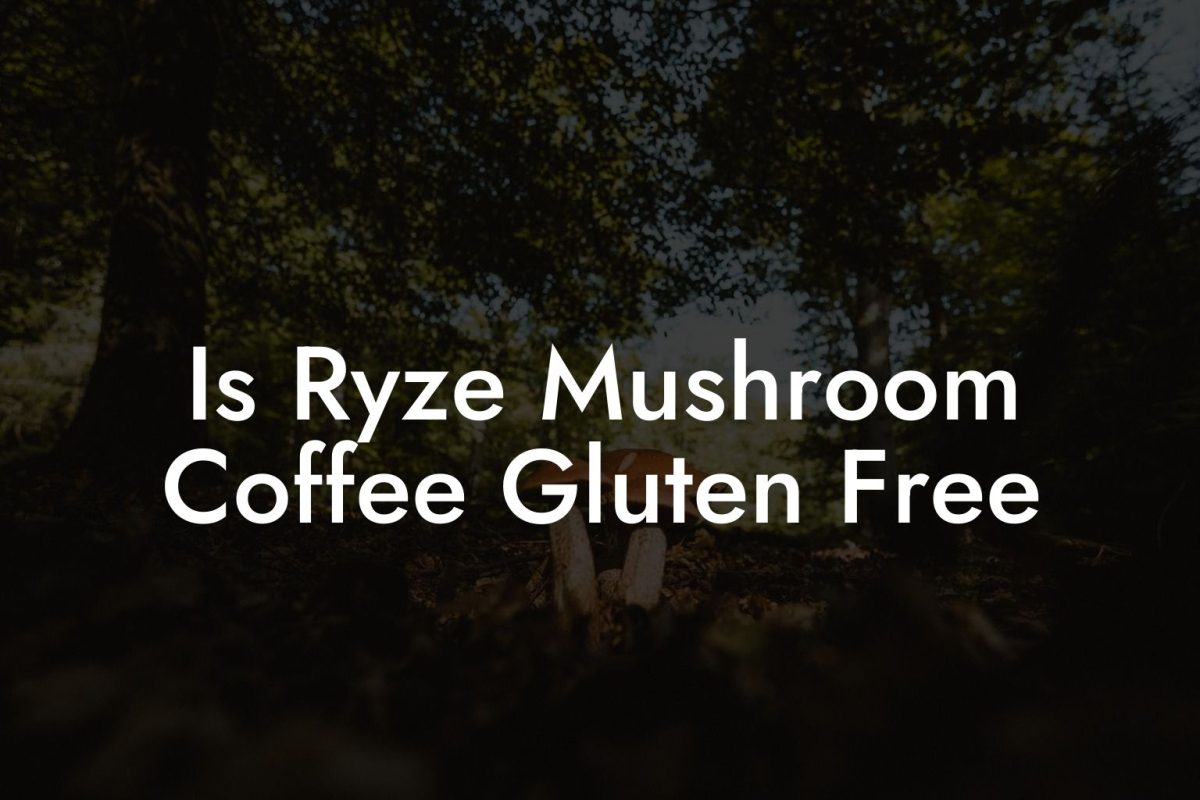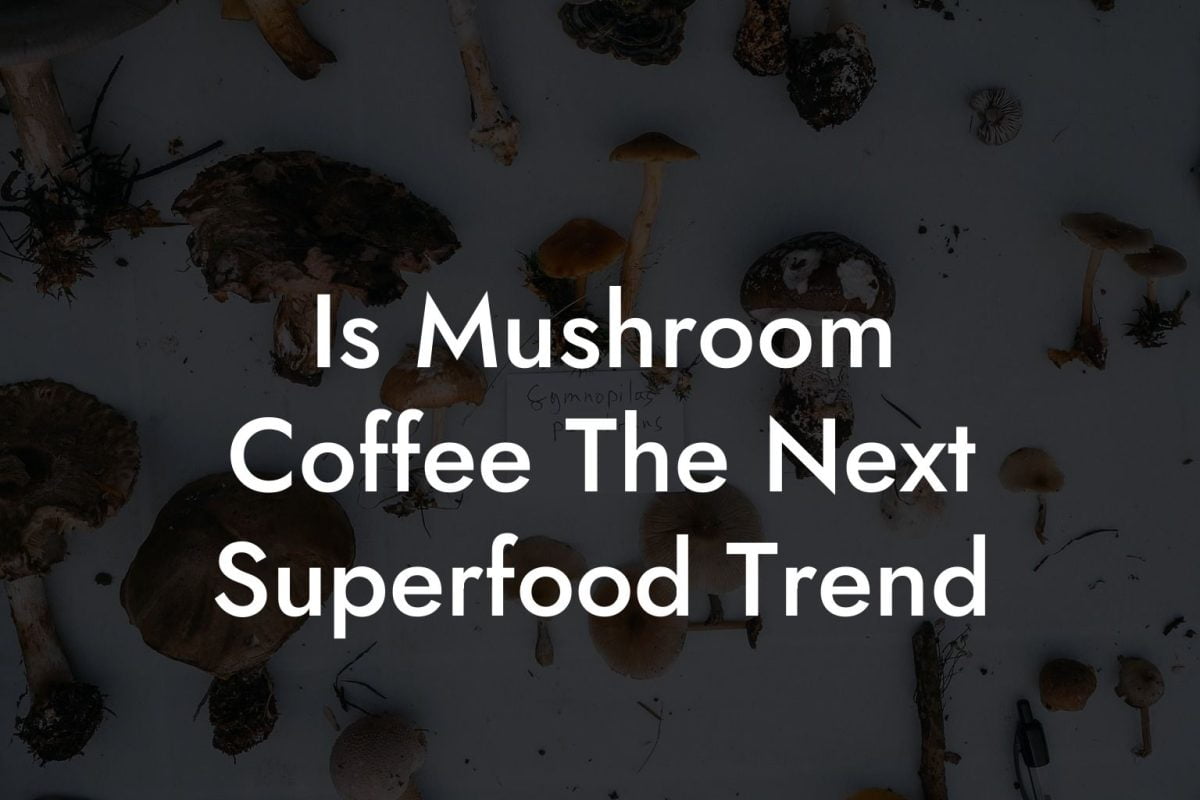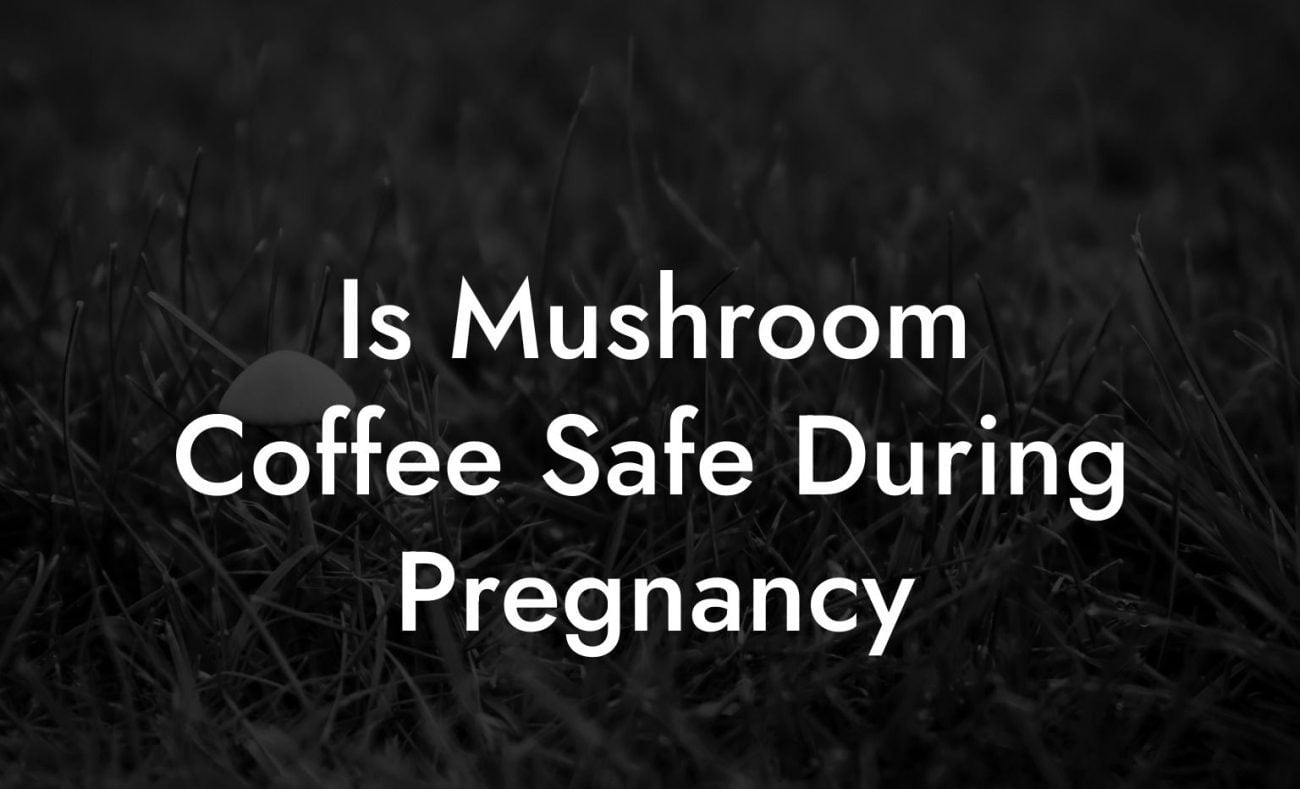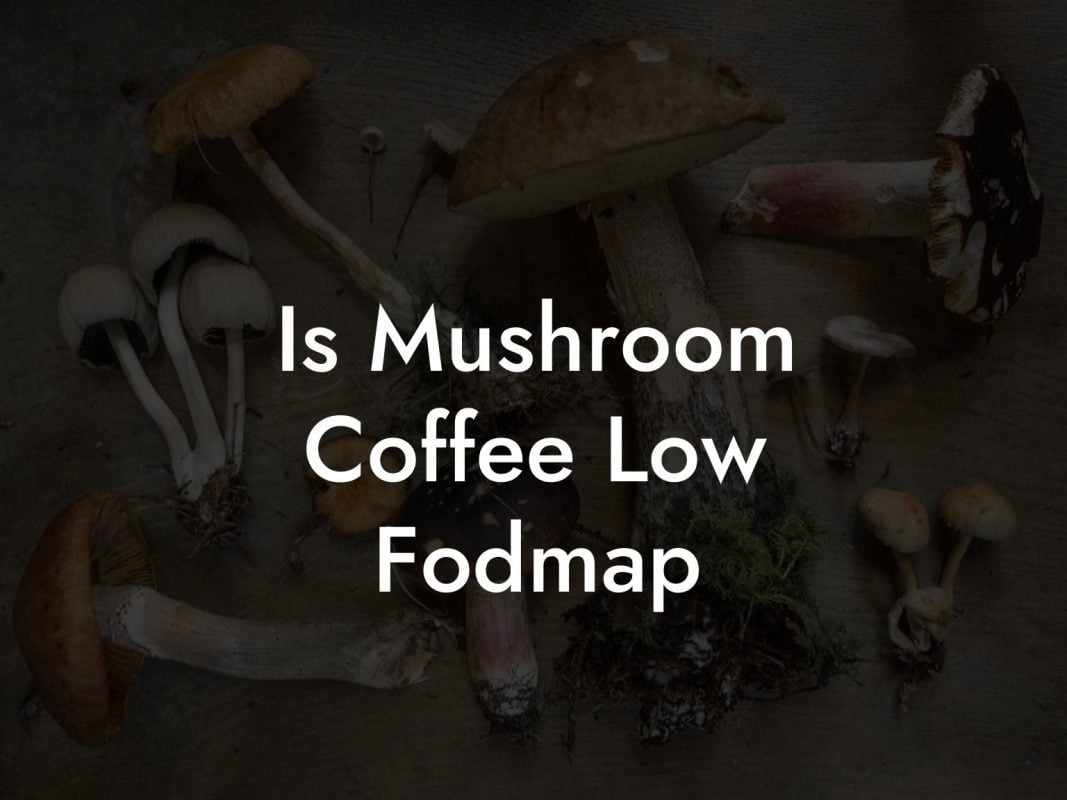Ever thought your beloved coffee grounds could be more than just yesterday’s brew waste? Imagine transforming those aromatic remnants into a thriving mini-farm of gourmet mushrooms, a sustainable twist that not only brings life to your leftover coffee but also fuels your mornings with a delicious mushroom coffee blend! Welcome to the vibrant world of Coffee Ground Mushroom Growing, where sustainability meets creativity, and every Gen-Z or millennial coffee aficionado can become a DIY mycologist. Get ready to discover how repurposing coffee grounds can create an eco-friendly, nutrient-packed environment for mushrooms that elevate your coffee experience from ordinary to extraordinary.
Quick Links to Useful Sections
- What Is Coffee Ground Mushroom Growing?
- The Science Behind Coffee Grounds and Mushroom Cultivation
- Environmental Impact and Sustainability Benefits
- Step-by-Step Guide to Coffee Ground Mushroom Growing
- Step 1: Sourcing and Preparing Your Coffee Grounds
- Step 2: Sterilization, Keeping It Clean and Contaminant-Free
- Step 3: Inoculation, Introducing the Fungal Friend
- Step 4: Incubation, The Waiting Game
- Step 5: Fruiting, Emergence of the Mushrooms
- Tips and Tricks for DIY Mushroom Growing at Home
- Troubleshooting Common Issues in Coffee Ground Mushroom Growing
- Issue: Contamination
- Issue: Excess Moisture or Dryness
- Issue: Slow Mycelium Colonization
- Issue: Poor Fruiting
- Case Studies: From Waste to Gourmet Mushrooms
- Case Study 1: The Urban Barista’s Hidden Garden
- Case Study 2: A College Dorm Room Transformation
- Case Study 3: The Sustainable Chef’s Kitchen Experiment
- Resources and Community Support: Your Next Steps
- FAQs on Coffee Ground Mushroom Growing
- Your Journey to Sustainable Gourmet Gold
What Is Coffee Ground Mushroom Growing?
Coffee Ground Mushroom Growing is the innovative practice of using spent coffee grounds as a cultivation substrate for growing mushrooms. Instead of tossing out the used grounds, this clever method repurposes them to provide a nutrient-rich environment that supports the growth of a variety of mushroom species. The concept is as simple as it is genius: coffee grounds are high in organic compounds that serve as an excellent medium for mycelium colonization, a process where fungal threads proliferate and eventually produce the mushrooms you can enjoy.
This eco-friendly practice is a favorite among urban gardeners, DIY enthusiasts, and even gourmet chefs, all looking to blend sustainability with culinary experimentation. Whether you’re looking to cultivate oyster mushrooms, shiitake, or even the increasingly popular lion’s mane, coffee grounds offer a readily available and effective substrate that transforms waste into gourmet gold.
In an era where sustainability is paramount, Coffee Ground Mushroom Growing not only minimizes waste but also creates a delightful hobby that marries science, sustainability, and a dash of culinary adventure. It’s a perfect project for those who appreciate a blend of innovation and environmental consciousness.
The Science Behind Coffee Grounds and Mushroom Cultivation
At the heart of coffee ground mushroom growing lies an intricate dance between biology and sustainability. Coffee grounds, brimming with essential nutrients like nitrogen, serve as a fantastic base for mushroom mycelium, the underground network akin to plant roots. When added to other organic materials, these nutrients help create a balanced substrate that encourages rapid and robust fungal growth.
Looking For The Best Mushroom Coffee? You'll Love These:
During the fermentation process, microorganisms break down the coffee grounds, releasing additional nutrients that support mycelial expansion. The slightly acidic pH of coffee grounds further helps in warding off harmful contaminants, allowing your beneficial fungi to dominate. This natural synergy between coffee compounds and mushroom spores is what makes this cultivation method so appealing for both urban farmers and eco-conscious enthusiasts.
From a scientific perspective, it’s all about creating the ideal conditions for fungal propagation. Variables such as moisture, pH levels, and substrate composition are meticulously balanced to mimic the mushrooms' natural habitat, allowing for optimal fruiting. And with a little bit of experimentation, something the Gen-Z and millennial do-it-yourself crowd thrives on, you can fine-tune this process and even explore hybrid cultivation techniques for unique mushroom strains.
Environmental Impact and Sustainability Benefits
In today’s era of environmental awakenings, sustainability isn’t just a buzzword, it’s a lifestyle. One of the most compelling aspects of coffee ground mushroom growing is its ability to reduce waste by turning used coffee grounds into a valuable resource. Instead of ending up in landfills, coffee grounds can be repurposed to cultivate mushrooms, thereby closing the loop between consumption and sustainability.
This practice not only offers an ingenious recycling solution but also contributes to reducing carbon footprint. Coffee grounds are abundant in urban and suburban communities, making them a low-cost, high-efficiency substrate. By integrating them into your mushroom cultivation process, you’re engaging in a form of urban farming that champions resourcefulness and environmental stewardship.
Furthermore, sustainable mushroom growing can contribute to a reduction in agricultural waste. By repurposing a by-product of one industry to fuel another, you’re participating in a circular economy that benefits both the environment and your taste buds. For those passionate about eco-friendly practices, this is the perfect intersection of environmental care and culinary innovation.
Step-by-Step Guide to Coffee Ground Mushroom Growing
Ready to dive into the adventure of cultivating mushrooms from coffee grounds? This practical guide lays out the step-by-step process to help you get started, whether you’re a seasoned urban gardener or a curious newcomer.
Step 1: Sourcing and Preparing Your Coffee Grounds
First things first, gather your coffee grounds. The best part? You can collect these from your daily brew, local cafes (many happily donate their used grounds), or even community coffee events. Make sure the coffee grounds are fresh and free from any non-organic impurities.
Once you have your stash, it’s time to let them cool and dry. Fresh, moist coffee grounds might be too wet for effective cultivation. Spread them out on a clean surface, and allow them to air-dry partially. Patience is key, this step ensures that your substrate isn’t overly saturated, which can lead to contamination.
Tip: For added nutrients, consider mixing the coffee grounds with other organic materials like straw, sawdust, or cardboard. This not only diversifies the substrate but also enhances fungal growth by creating a balanced environment.
Step 2: Sterilization, Keeping It Clean and Contaminant-Free
Just like prepping a canvas for your masterpiece, sterilization is crucial for successful mushroom cultivation. Contamination by unwanted bacteria or mold can derail your entire process. Depending on your setup, you might opt for pasteurization or even pressure cooking your substrate mixture.
If you’re a DIY enthusiast, consider using a large pot of boiling water or a steam cleaner for pasteurization. Maintain the temperature around 160°F (70°C) for about 30 minutes to kill off harmful microorganisms without damaging the beneficial nutrients in the coffee grounds.
Pro-tip: Work in a clean environment, sanitize all your tools and surfaces to minimize the risk of contamination. This small extra step can make a huge difference in ensuring your mushroom growing journey stays on track.
Step 3: Inoculation, Introducing the Fungal Friend
Once your substrate is prepped and cooled, it’s time for the magic moment: inoculation. This is where you introduce mushroom spawn (the equivalent of seeds for fungi) into your coffee ground mix. Depending on the mushroom species you choose, you might need hardwood sawdust spawn, grain spawn, or plug spawn.
Gently mix the spawn into the substrate, ensuring a uniform distribution of fungal spores. This stage is critical as it sets the foundation for mycelial colonization, a process that, with the right conditions, can transform your coffee grounds into a flourishing mushroom bed.
Experimentation is key here. Different species might require slight variations in the method, so don’t be afraid to try multiple techniques. Remember, the DIY spirit means embracing both failures and successes on your road to mushroom mastery.
Step 4: Incubation, The Waiting Game
After inoculation, transfer your mixture into clean, sealable containers or grow bags. Store them in a dark, warm place (ideally between 70°F and 75°F) to allow the mycelium to colonize the substrate. This incubation phase typically spans 2 to 4 weeks.
Patience is a virtue in mushroom cultivation. During this period, you might notice white, thread-like mycelium spreading through the substrate, a sure sign that your fungal friends are thriving. Avoid disturbing the setup, as any sudden change in temperature or contamination could set back your progress.
Fun fact: This waiting period is the perfect time to start brainstorming creative coffee ground upcycling projects. Why not take a break and enjoy a cup of mushroom coffee while you wait for nature to do its thing?
Step 5: Fruiting, Emergence of the Mushrooms
Once your substrate is fully colonized, it’s time to shift into fruiting mode. Expose the colonized substrate to fresh air, indirect light, and a higher humidity level (around 85-95%). This change in environment signals the mycelium to produce the fruit bodies, actual mushrooms.
Depending on the species, fruiting can occur within a week or two after initiating these conditions. Keep a keen eye on the progress, and be prepared to harvest your mushrooms at their peak of freshness. The resulting yield might vary, but the rewards, both culinary and sustainable, are worth every minute.
A word to the wise: Maintain a consistent environment during this stage. Covering the setup with a breathable material like a humidity tent or plastic wrap with a few holes can help retain moisture while allowing airflow.
Tips and Tricks for DIY Mushroom Growing at Home
Coffee Ground Mushroom Growing isn’t just about following a set process, it's about infusing creativity into your cultivation journey. Here are some insider tips to amp up your DIY game:
- Mix It Up: Experiment by mixing coffee grounds with other organic substrates like coco coir or compost for different textures and nutrient profiles.
- Monitor Moisture Levels: Too wet can invite contamination, while too dry slows growth. A simple spray bottle can help maintain the perfect humidity balance.
- Use a Hygrometer: Keep track of the humidity levels in your growing space with an affordable hygrometer to ensure optimal conditions.
- Repurpose Household Items: Old plastic bins or repurposed containers can serve as great growing chambers with minimal cost.
- Document Your Journey: Keep a journal or a digital diary. Not only does this help you track progress, but it also allows you to share your successes (and mishaps) with your community.
- Embrace Imperfection: Every batch might offer subtle differences in growth and yield, consider it part of the fun challenge and learning curve.
For the Gen-Z and millennial crowd, this is a prime opportunity to snap some aesthetic process photos, document your #mushroomjourney on Instagram, and share behind-the-scenes stories with your followers. Who knew sustainable living could be so photogenic?
Troubleshooting Common Issues in Coffee Ground Mushroom Growing
No cultivation journey is without its bumps. Even the most dedicated DIY mycologists may encounter a few hiccups along the way. Here are some common issues and solutions:
Issue: Contamination
Contamination by unwanted bacteria or molds is one of the most common challenges. If you notice an off-color, fuzzy growth that doesn’t resemble healthy mycelium, it’s time to reassess your sterilization practices. Ensure your substrate is properly pasteurized and all tools and work surfaces are thoroughly sanitized.
Solution: Isolate the contaminated batch if possible and adjust your technique next time. Sometimes, even a short exposure to contaminants can be mitigated by increasing air circulation and maintaining a controlled environment.
Issue: Excess Moisture or Dryness
The Goldilocks zone of moisture is essential. Too much water can create a breeding ground for bacteria, while too little slows down mycelial growth.
Solution: Regularly check the moisture content of your substrate. Use a spray bottle to adjust humidity and consider covering your growing setup with a barrier that maintains the right balance.
Issue: Slow Mycelium Colonization
If your substrate isn’t colonizing at the expected pace, it may be due to low temperatures or an imbalance in nutrients.
Solution: Keep your incubation area in a warm, stable environment (ideally between 70°F and 75°F) and double-check that your coffee grounds are evenly mixed with other organic materials. Sometimes a slight adjustment in the substrate mix does the trick.
Issue: Poor Fruiting
Even if the mycelium colonizes well, getting the mushrooms to fruit can sometimes be a challenge.
Solution: Ensure that you transition your setup to a fruiting environment with the proper humidity and light exposure. A subtle increase in fresh air or a slight temperature shift can trigger fruiting responses.
Case Studies: From Waste to Gourmet Mushrooms
Real-life examples can be incredibly inspiring when it comes to Coffee Ground Mushroom Growing. Here are three case studies that illustrate how repurposing coffee grounds can lead to impressive results:
Case Study 1: The Urban Barista’s Hidden Garden
Meet Alex, an urban barista and self-proclaimed eco-warrior who started collecting coffee grounds from his bustling café. Instead of discarding the grounds, Alex experimented with mixing them with coconut coir and straw. Through careful monitoring and a touch of DIY innovation, his system quickly became a thriving mini mushroom farm producing a bountiful harvest of oyster mushrooms. Alex’s initiative not only reduced waste at his café but also became a social media sensation, inspiring countless followers to embrace sustainable urban gardening.
Case Study 2: A College Dorm Room Transformation
College life is all about creativity, and Sarah, a culinary arts student, found an innovative way to turn her cramped dorm room into a sustainable mushroom growing lab. Using recycled coffee grounds from the campus coffee shop and a repurposed plastic container, Sarah set up a small mushroom cultivation system. Within a few weeks, her room was not only filled with the aroma of fresh coffee but also the earthy scent of mushrooms. Her experiment led to a mini revolution on campus, sparking interest in sustainable living among her peers.
Case Study 3: The Sustainable Chef’s Kitchen Experiment
Chef Marcus, known for his farm-to-table restaurant, wanted to create a signature mushroom cultivar that would pair perfectly with his artisanal coffee concoctions. By integrating coffee ground mushroom growing techniques into his seasonal menu, Marcus managed to produce a unique variety of shiitake mushrooms. His innovative approach caught the eye of local food critics and sustainability advocates alike, proving that even high-end culinary experiences can benefit greatly from eco-friendly practices.
These case studies showcase that with creativity and a commitment to sustainability, anyone, from a busy urban barista to a resourceful college student, can harness the power of coffee grounds to yield delicious and environmentally responsible mushrooms.
Resources and Community Support: Your Next Steps
Ready to take your Coffee Ground Mushroom Growing journey to the next level? There’s a growing community of eco-conscious cultivators, amateur mycologists, and sustainability advocates who are eager to share their experiences.
Join online forums, social media groups, and local workshops dedicated to sustainable mushroom cultivation. Platforms like Reddit’s r/MushroomGrowing, Facebook groups, and specialized blogs offer invaluable tips, troubleshooting advice, and even step-by-step video tutorials. You can connect with like-minded individuals who are also repurposing their coffee grounds for a greener tomorrow.
Look for local community gardens or sustainable farming cooperatives that often host workshops on alternative farming techniques. These spaces not only provide hands-on learning experiences but also foster an environment of collective creativity and mutual support. Whether you’re looking for advanced cultivation techniques or just starting your journey, remember that there’s a whole community out there to help you bloom along with your mushrooms.
Your next steps could also involve experimenting with hybrid substrates, exploring different mushroom varieties, or even sharing your own success stories on social media platforms. Embrace the journey, tap into the wealth of shared knowledge, and be the trailblazer in your community for sustainable, innovative food practices.
FAQs on Coffee Ground Mushroom Growing
Below is a curated FAQ section that addresses some of the most common questions about coffee ground mushroom growing. Dive in to learn more about this sustainable practice and how you can perfect your technique.
1. What exactly is coffee ground mushroom growing?
Coffee ground mushroom growing is the practice of using spent coffee grounds as the cultivation substrate for growing mushrooms. This nutrient-rich waste material provides an excellent medium for mycelium growth and, ultimately, mushroom fruiting.
2. Which mushroom species grow best on coffee grounds?
Oyster mushrooms, shiitake, and lion’s mane are some popular choices for coffee ground mushroom growing. Different species might require slight adjustments in the substrate composition, so it’s worth experimenting based on your taste and local conditions.
3. Do I need any special equipment to get started?
Not really! Basic equipment includes a clean container (or grow bag), a means to pasteurize your substrate (like a large pot or pressure cooker), and a spray bottle to maintain humidity. Many DIY enthusiasts make use of household items to create an effective environment.
4. How do I prevent contamination during the growth process?
Contamination prevention is key. Sterilize or pasteurize your substrate thoroughly, work in a clean environment, and sanitize your tools. Minor mishaps might occur, so having a plan for isolating contaminated batches is essential.
5. How long does it take from inoculation to harvest?
Typically, it takes around 2-4 weeks for the mycelium to fully colonize the substrate and another 1-2 weeks for fruiting conditions to result in harvestable mushrooms. The timeline can vary based on environmental factors and the mushroom species.
6. Can I mix coffee grounds with other substrates?
Absolutely! Combining coffee grounds with materials like sawdust, straw, or coco coir can improve texture and nutrient balance, often leading to a more robust yield.
7. Is it necessary to control the pH of the substrate?
Coffee grounds naturally have a slightly acidic pH, which often helps ward off unwanted contaminants. However, monitoring pH levels can be beneficial when mixing with other substrates to ensure optimal conditions for mycelial growth.
8. Does growing mushrooms on coffee grounds contribute to sustainability?
Yes, repurposing coffee grounds not only reduces waste but also minimizes your environmental footprint by creating a cycle of reuse. It’s a win-win for both your taste buds and the planet.
9. Can I set up a small mushroom cultivation project in an apartment?
Definitely! Many urban dwellers have successfully set up mini mushroom farms in tight spaces using recycled containers, provided they can maintain the proper humidity and temperature.
10. Where can I find more information and community support?
Online forums, social media groups, local workshops, and sustainable farming cooperatives are great resources. Engaging with communities like Reddit’s r/MushroomGrowing and specialized DIY blogs can provide helpful insights and inspiration.
Your Journey to Sustainable Gourmet Gold
Coffee Ground Mushroom Growing is more than just a quirky DIY project, it’s a revolutionary step toward sustainable living, culinary innovation, and environmental stewardship. Every step you take to turn discarded coffee grounds into a thriving mushroom harvest is a small victory for our planet and a notable achievement in your personal journey toward a greener lifestyle.
Embracing this practice means more than enjoying the occasional gourmet mushroom or a unique mushroom coffee blend, it means participating in a movement that repurposes waste, reduces carbon footprints, and nurtures a deeper connection with nature. It’s a dynamic blend of science, sustainability, and creativity that resonates strongly with today’s eco-aware generation.
As you embark on your coffee ground mushroom growing adventure, remember that every step, from collecting those aromatic grounds to witnessing the first sprout of mycelium, adds a new dimension to your sustainable lifestyle. Experiment boldly, learn from every batch, and share your journey with the vibrant community of fellow cultivators who are redefining what it means to be eco-friendly.
Whether you’re a coffee connoisseur, a sustainability advocate, or simply someone who enjoys a good DIY challenge, your efforts in mushroom cultivation have the power to spark conversations, inspire change, and contribute to a more sustainable future. Trust the process, embrace the occasional mishap, and celebrate every fresh, organic mushroom as a symbol of creativity and care for the planet.
Your journey to sustainable gourmet gold begins with something as simple as your coffee cup. As you sip your favorite brew, imagine the potential of those coffee grounds, a potential that, with a little effort and a lot of passion, transforms into a thriving mushroom oasis right in your home. The best part? This process is as rewarding and refreshing as that first sip of perfectly brewed coffee on a chilly morning.
Dive in, experiment, and let the magic of nature and creativity collide. With every mushroom you harvest, you’re not just growing food, you’re cultivating a legacy of sustainability, innovation, and a fierce commitment to making the world a greener place.
Looking For The Best Mushroom Coffee? You'll Love These:
Useful Interruption: Dive deeper into the world of Mushroom Coffee with our most popular sections. If there is anything you think is missing or anything you would love for us to write about, just give us a shout.
- Mushroom Coffee Equipment & Product Reviews
- Mushroom Coffee Recipes & Creative Variations
- Mushroom Coffee Guides & Troubleshooting
- Mushroom Coffee Brewing & Preparation Techniques
- Model Rocket Advanced Rocketry & Innovations
- Mushroom Coffee Fundamentals
- Model Rocket Equipment Reviews & Digital Tools
- Mushroom Coffee Health Benefits & Wellness
- Mushroom Coffee Mycology & Scientific Insights
- Mushroom Coffee Community, Lifestyle & Engagement
I tried mushroom coffee this morning and told my friend, "This brew is spore-tacular!" He shot back, "Guess that's why it's such a cap-tivating way to kickstart your day!"

